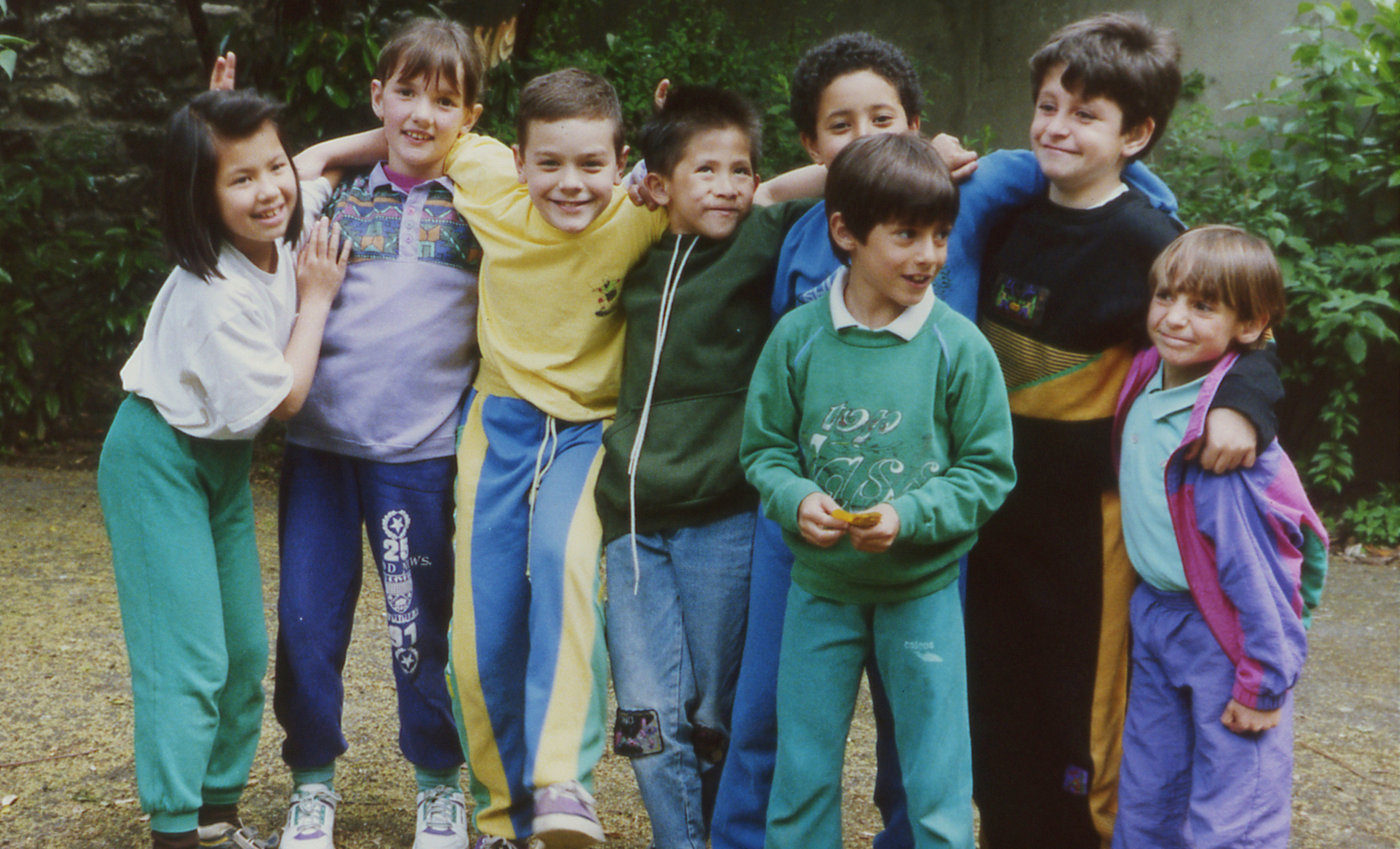‘Land’ resounds with powerful sound of silence
Betsy Sherman / The Boston Globe – November 3, 1994
In the Land of the Deaf is disarmingly casual for a film that is so uniquely powerful. Here is a film that, over the course of 99 minutes, will challenge every preconception the viewer may have had about deaf people. Because, in the tradition of ethnographic film but without any heavy‑handedness, In the Land of the Deaf shows a distinct, stillevolving culture that exists among deaf people, most effectively displayed through the richness of sign language.
Rather than calling to mind previous documentaries, Nicolas Philibert’s film seems to continue the French humanistic tradition of Jean Renoir and Francois Truffaut. The scenes of deaf children and their teacher may recall Truffaut’s The Wild Child with one big difference: While the aim in that film was to assimilate the boy into French society, this film celebrates what could be called deaf chauvinism. Its adult subjects, for the most part, prefer to be among deaf people, and the film implicitly encourages the hearing world to learn from the deaf, rather than the other way around.
No hearing person speaks to the camera. The film is English‑subtitled for both the French words spoken and the French sign language. The extraordinary Jean‑Claude Poulain, in some ways the central figure of the film, explains that while hearing people think sign language is international, it is really different in each country. But deaf people are able, he notes, to learn another sign language within a few days.
There is no all‑knowing narrator in the film, but expressive use of ambient sound and silence. A member of a deaf theatrical troupe tells the camera how he dreamed of being an actor as a child, but a film director neighbor refused to put him in his movies. From there we are plunged into the land of the deaf, following the progress of a class of children, and watching Poulain teach a class of adults. Poulain is a teacher of sign language ‑ and, by extension, an acting teacher ‑ for his communication involves a delightful plunge into body language and nuanced facial expressions. Conversely, the hearing‑impaired children are not shown learning sign language, but are learning to speak French. We see the hearing mother of a little boy making an effort to learn sign language from her son.
The adult subjects who grew up mostly among hearing people tell of loneliness and confusion. One woman, as a girl, was only exposed to other deaf children and not adults. “Do we die at 20?” she wondered. Then her parents took her to a university for the deaf in America, and she saw a “bright future.” But there are some effectively radical revelations. One man tells of when he was made to wear a hearing aid, how he hated the noise of doors slamming, of chalk on a blackboard. “I got back to silence; what a relief,” he says. A man proudly says his family has been deaf for five generations; his sisters married deaf men and had deaf children, but his aunt, unfortunately, had a hearing child. Poulain tells of his disappointment that his daughter was born with hearing: “I had dreamed of having a deaf child. It would be easier to communicate.”
During a deaf group’s tour of the Louvre, Philibert lets the irony of one particular moment sink in: After we have seen the beauty and vitality of sign language, Venus de Milo’s lack of arms seems as horrific a sight as can be imagined.
